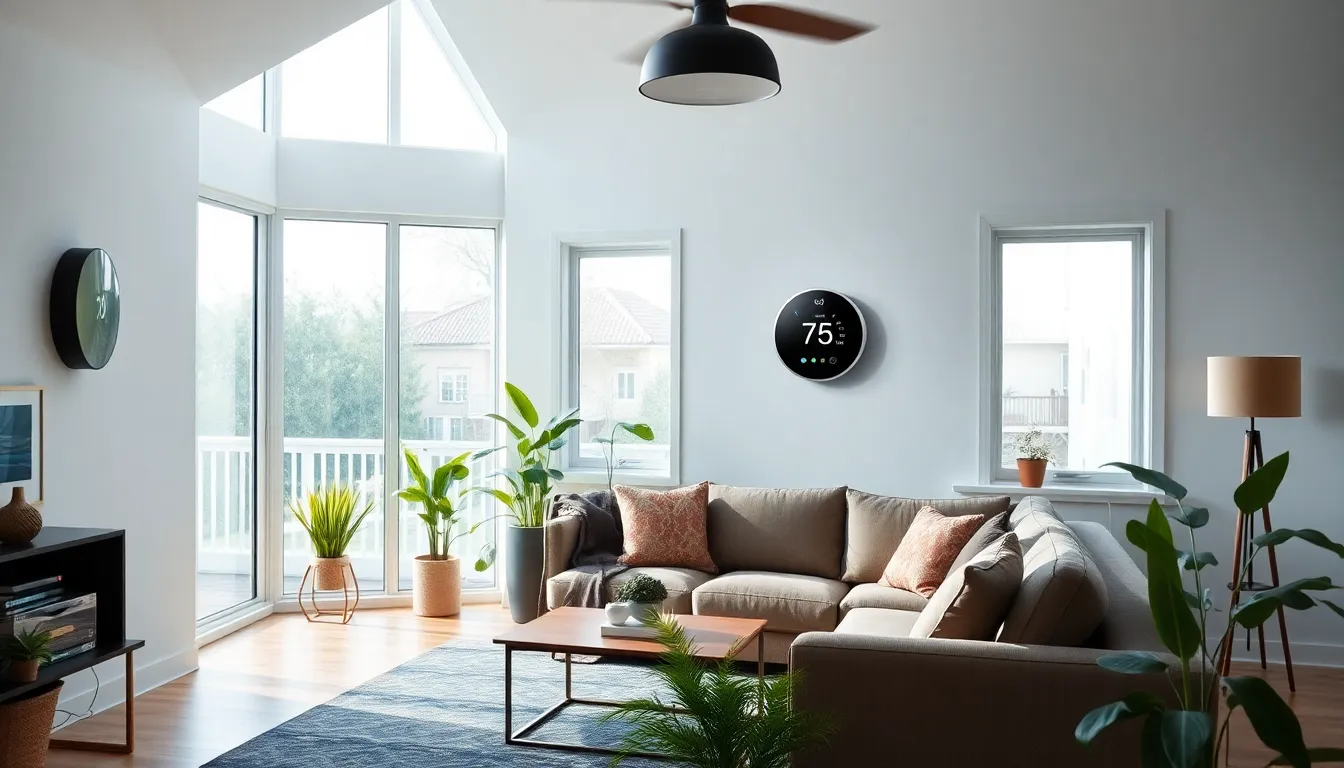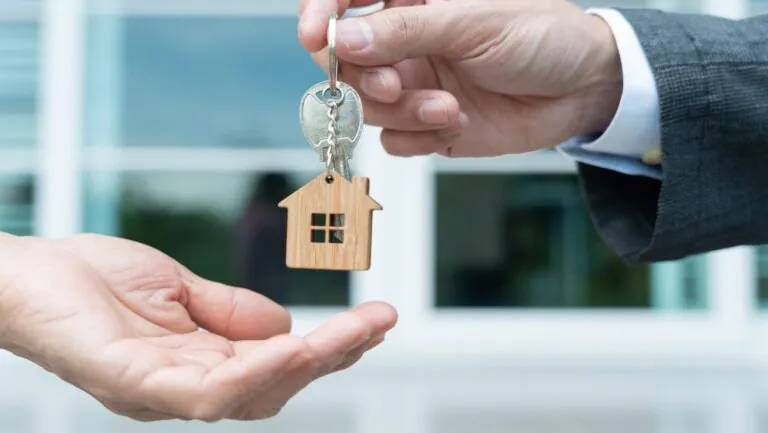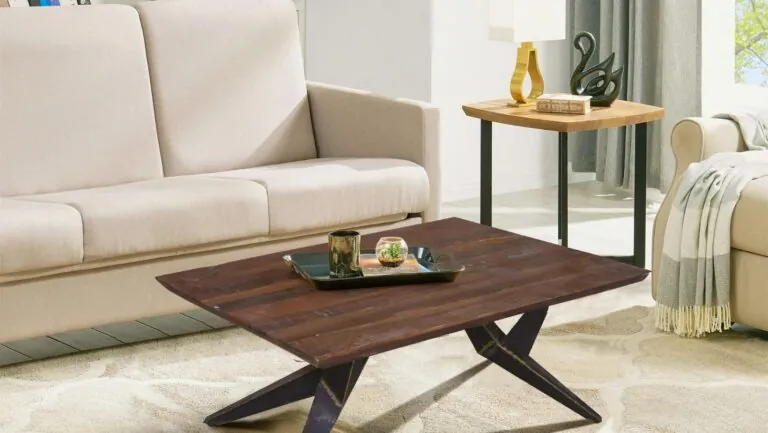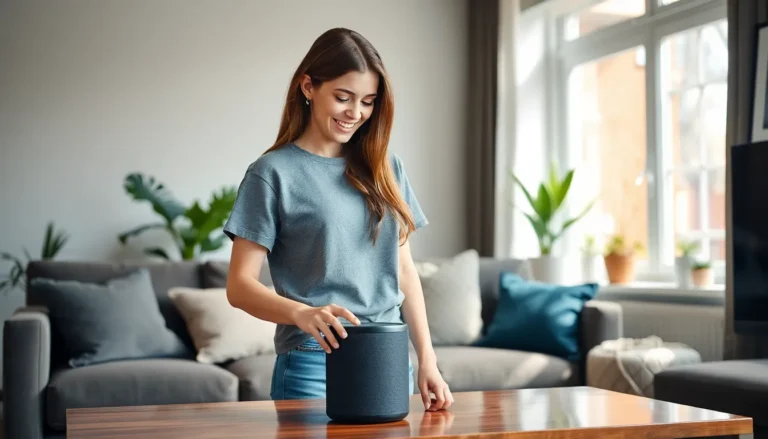Imagine walking into your home and having it immediately adjust to your preferences—lights dimming, your favorite playlist blasting, and the thermostat setting itself to that perfect cozy temperature. Welcome to the world of a unified smart home, where technology works together seamlessly to create a living experience that feels almost magical.
Table of Contents
ToggleOverview Of Unified Smart Home
Unified smart homes integrate multiple technologies to provide enhanced comfort and convenience. Home devices communicate seamlessly, learning preferences and adapting settings automatically. This interconnectedness fosters an environment that caters to individual lifestyles.
Lighting systems adjust based on occupancy and time of day, creating the perfect ambiance without manual input. Security features monitor home entrances and alert homeowners to potential threats in real-time. Smart appliances streamline daily tasks, often allowing for remote operation via smartphones or voice commands.
Thermostats automatically regulate temperature based on personal preferences and energy-saving schedules. Music systems sync with other devices to deliver audio experiences tailored to specific rooms. Each component contributes to a cohesive smart home ecosystem.
Unified systems often utilize hubs or platforms that consolidate control of various devices. These platforms support compatibility with numerous brands, ensuring flexibility while maintaining a user-friendly experience. For instance, a voice assistant can control lights, security, and entertainment with simple commands.
Homeowners benefit from energy efficiency through automated systems that respond to usage patterns. Data collected from devices allows for informed decision-making regarding energy consumption and smart home upgrades. Overall, this coordinated approach to home management enhances quality of life, providing comfort, efficiency, and peace of mind.
Key Features Of Unified Smart Home

Unified smart homes offer essential features that enhance daily living. They include interconnectivity and automation capabilities, which significantly impact overall functionality.
Interconnectivity
Interconnectivity among devices allows seamless communication between gadgets. Smart lights, thermostats, and security systems coordinate effortlessly, creating a cohesive environment. Homeowners experience convenience as devices operate in sync according to set routines. For instance, lighting activates automatically when someone enters a room or adjusts based on natural light levels. Integration also extends to various platforms and devices, ensuring compatibility across multiple ecosystems. Systems designed for interoperability enable users to control everything from a single hub, minimizing the need for separate apps. This interconnected network simplifies management and enhances the user experience.
Automation Capabilities
Automation capabilities in unified smart homes streamline everyday tasks. Systems trigger actions based on predefined settings or learned behaviors, reducing manual efforts. For example, a smart thermostat learns the homeowner’s schedule and adjusts temperatures automatically to save energy while maintaining comfort. Scheduled routines let users dictate when to activate lighting or appliances without needing intervention. Voice commands can also initiate actions, providing hands-free control over technology. Automation not only improves efficiency but also allows for customization according to specific user preferences. This functionality transforms homes into intelligent spaces that adapt as needed, enhancing comfort and convenience.
Benefits Of A Unified Smart Home
Unified smart homes offer numerous advantages, enhancing security, energy efficiency, and convenience. These features transform living spaces into smarter environments suited for modern lifestyles.
Enhanced Security
Enhanced security stands out as a key benefit of a unified smart home. Integrated security systems combine cameras, motion sensors, and door locks, allowing homeowners to monitor their properties in real-time. Notifications about suspicious activities reach users immediately, providing added peace of mind. Remote access to security feeds enables quick reactions from anywhere. In case of emergencies, automated alerts can notify authorities promptly. Furthermore, smart doorbells with video capabilities let homeowners see who is at the door before opening it. These security features work together to create a comprehensive safety net.
Energy Efficiency
Energy efficiency serves as another significant advantage of unified smart homes. Smart thermostats optimize heating and cooling based on occupancy and weather predictions, ensuring minimal energy waste. Appliances programmed to operate during off-peak hours save money while reducing environmental impact. Lighting systems equipped with motion sensors automatically turn off when no one is present, avoiding unnecessary energy usage. Homeowners can track their energy consumption through accessible apps, leading to informed decisions regarding usage patterns. Collectively, these elements contribute to reduced utility bills and a smaller carbon footprint.
Convenience
Convenience highlights the appeal of a unified smart home. Homeowners can control multiple devices using a single app, streamlining daily routines. Voice assistants facilitate hands-free operation, making it easy to adjust settings without manual effort. Smart kitchens allow users to preheat ovens remotely or receive updates on cooking progress. Scheduling automation simplifies tasks, such as setting the lights to turn on automatically at sunset. Being able to create personalized routines enhances comfort and responsiveness, adapting homes to match individual lifestyles. This level of convenience transforms daily life into a more enjoyable experience.
Challenges And Limitations
Navigating a unified smart home presents various challenges. Users often encounter compatibility issues between devices and platforms from different manufacturers.
Compatibility Issues
Many smart home devices don’t communicate effectively due to varying communication protocols. Brands like Google, Amazon, and Apple use different standards, which can create integration headaches for homeowners. Efforts to connect devices may require additional hubs or adapters, complicating what should be a seamless experience. Some solutions, while improving interoperability, can still fall short, limiting device options. Homeowners might find frustration in having to replace outdated devices to maintain compatibility within their smart home ecosystem.
Privacy Concerns
Privacy concerns arise as smart home devices collect vast amounts of user data. Device manufacturers often store sensitive information, raising questions about data security and user consent. Potential vulnerabilities in smart home networks may expose personal information to cyber threats. Homeowners may fear unauthorized access, especially with devices equipped with cameras and microphones. Furthermore, transparency from companies regarding data usage remains a priority for users wanting to safeguard their privacy. It’s crucial for smart home users to stay informed about potential risks to protect their personal data effectively.
Future Of Unified Smart Home Technology
Unified smart home technology is set for remarkable advancements. Enhanced interoperability will lead to broader adoption of compatible devices across different manufacturers. Homeowners experience streamlined integration, which simplifies their interactions with multiple smart devices.
Artificial intelligence plays a crucial role in evolving smart home systems. Machine learning algorithms will enable devices to understand user preferences with increasing accuracy. For instance, lighting may adjust not only based on time but also on recent usage patterns for improved comfort.
Voice recognition technology will transform how users interact with their homes. Enhanced systems will recognize multiple voices and provide personalized experiences tailored to individual family members. As smart speakers continue to evolve, controlling various devices becomes even easier and more intuitive.
Energy consumption is also expected to improve significantly. Smart home systems will optimize energy usage based on real-time data, significantly reducing bills. Automated adjustments will not just depend on preset schedules but on actual occupancy and usage trends.
Security enhancements will become standard in unified smart homes. Advanced facial recognition and smart locks will provide seamless access while maintaining high security. Integration with law enforcement and neighborhood watch programs may provide additional layers of safety.
Challenges surrounding privacy and cybersecurity remain relevant. Occupants will need to be increasingly vigilant about data protection. Manufacturers must commit to transparent data policies to build consumer trust and ensure safe usage.
Unified smart home technology promises to create a future that is both user-friendly and secure. Continuous innovation will shape environments that not only adapt to preferences but also safeguard user data. The evolution continues, aligning with the needs and expectations of modern lifestyles.
Unified smart homes represent a significant leap toward creating personalized living environments that adapt to individual preferences. With seamless integration of devices and advanced automation capabilities, homeowners can enjoy enhanced comfort and security.
The future promises even greater advancements in interoperability and user experience. As technology continues to evolve, smart homes will become increasingly intuitive and efficient. However, it’s essential for users to remain aware of privacy and security concerns as they embrace these innovations.
By prioritizing transparency and informed decision-making, homeowners can enjoy the full benefits of a unified smart home while safeguarding their personal information. The journey toward smarter living spaces is just beginning, and it holds exciting possibilities for everyone.




